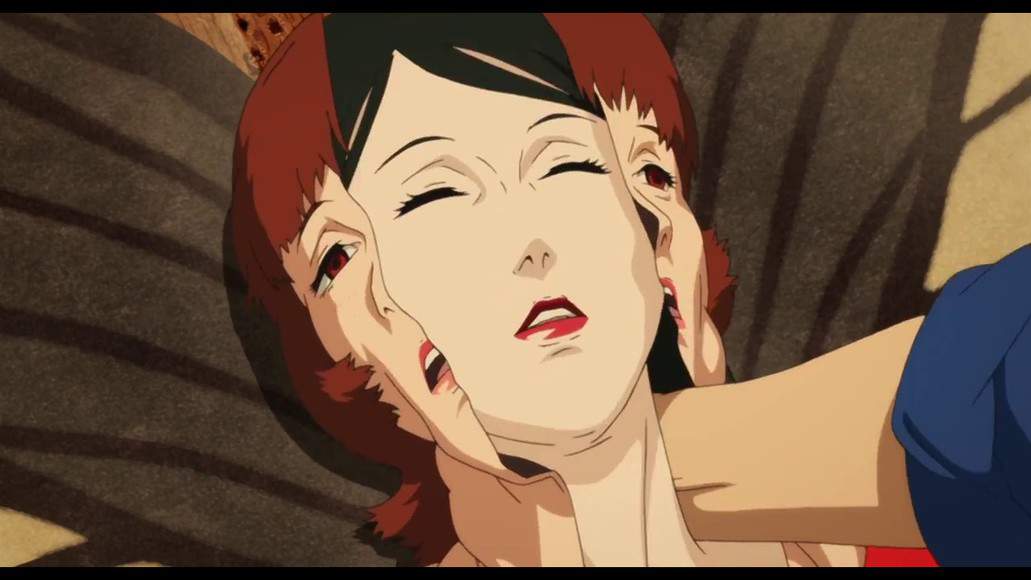On November 20, 1971, Nikkatsu launched its new Roman Porno line with the double bill of Hayashi Ishao's “Castle Orgies” and Nishimura Shogoro's “Apartment Wife: Afternoon Affair”. The following 17-year period saw a grand total of at least 850 titles (another catalogue mentions 1133) released under this new brand name. before the series came to a halt in 1988. The bulk of these, a total of around 710 films, were made in-house by Nikkatsu, with the rest produced under contract by a number of independent pink companies including Shishi Pro and ENK, which meant that one of the three films playing on the triple bills in the Nikkatsu-operated adult theaters would have been made outside of Nikkatsu (source: Behind the Pink Curtain, by Jasper Sharp)
Check the review of the book
The films were (in)famously shot under three simple rules, ave a scene of simulated sex occur approximately every ten minutes, produce the movies on a shoestring budget and shoot them within a week's time. Apart from these, however, the filmmakers enjoyed much creative freedom, and a number of later famous filmmakers started or continued their careers through the line, as in the case Yojiro Takita, who went on to win an Oscar with “Departures”. Furthermore, the films were occasionally of high quality, as in the case of “The Woman with Red Hair” for example, which was the fourth best film in Kinema Junpo magazine's annual rankings, and the protagonist, Junko Miyashita, winning a Best Actress Award from Hochi News sportspaper.
In 2016, in time for the 45th anniversary of the initial launch, Nikkatsu decided to relaunch the line with five titles, while 2022 saw a second launch, with three additional titles. Some of these films were remakes of classics of the category while others took a more contemporary approach, by an effort to produce movies that move away from their misogynistic roots and emphasis on male desire to focus on female subjectivity and desire outside the male gaze. In this article, we have amassed all the titles of the relaunch.
1. Aroused by Gymnopedies (Isao Yukisada)

The direction in the film services the story well, but does nothing in particular to impress. It is the writing by director Isao Yukisada and Anne Horizumi that really breathes life into this movie. The erotic scenes are well shot and done tastefully. Despite his blase attitude, Furuya still treats his partners with a certain level of respect, which is something that was not always apparent in Roman Porno features. It is these romantic gestures that brings him out of the perverted archetype often found in Pink films. It makes him a more likable personality, which was needed to offset his pessimistic nature.
Itsuji Itao handles the roll of Furuya well, but the character was not really written to express a wide range of emotions. There are only a few instances where he has to portray any deeper feelings, but when he does, he executes it well. However, these moments are too seldom to put his performance to much critique. Sumrise Ashine who plays Yuka, the young student that Furuya spends most of his time with during the movie, had more depth as an actor. In her role, she was able to re-capture the traits of the stronger female leads during the Roman Porno era: strong, independent, sensual, with a certain amount of innocence. “Aroused by Gymnopedies” is her first film, and from this performance, I hope to see more of her in future productions. (Adam Symchuk)
2. Wet Woman in the Wind (Akihiko Shiota)

As with many entries in the pink genre, using the label pornography fails to fully define a movie such as “Wet Woman in the Wind”, especially due to its thematic and technical aspects. In many ways, Kosuke is a representative of the kind of pretentiousness which can be at times observed with people working in the cultural sector. In the name of culture and to concentrate he has turned himself into a hermit, more or less isolated in the woods, satisfied with his pose as the artist who needs distance in order to work.
Shiori is a character exposing the pretentiousness of this pose. Using her female features and the promise of sex to lure Kosuke out of his condition and admit the ridiculousness of it, is her plan, as with some of the other males she has already seduced. While the set is, as with many pink movies, rather minimalist, the ramshackle hut is a fitting and quite funny metaphor for Kosuke's pompous interpretation of the artist and his work, with Shiori repeatedly destroying parts or at least damaging it. In that regard, her dialogues with Kosuke are filled with incredibly funny banter and sexual innuendos, a battle of words and wits to determine how bullet-proof the author's new standard of living and celibacy truly is. (Rouven Linnarz)
Watch This Title
3. Dawn of the Felines (Kazuya Shiraishi)

While the original cycle of roman porno films were marketed as romantic pornography, there is an absence of romance in “Dawn of the Felines”. The sexual encounters are marked by a mixture of despair and self-loathing on behalf of both parties. The sex is there because it is part of the day to day life of the women – it is the one commodity in a consumer society that when all else fails, woman can exchange for money, deluding themselves that they can gain back some self-worth from the transaction – Misako's alienation and marginalisation, Yui's inability to be a good mother, and Rei's failure to conceive. Against the neon background of Ikebukuro, the lives of the three women spiral out of control, until a shocking event fractures the relationships between them and they are forced to go in different directions.
While the first half of the film has a light comedic feeling, things shift into a darker direction in the second, a transition which is marked by the three women's night out a bondage club. While Misako has frenetic sex with Tanaka in one of the sex rooms, Yui and Rei allow themselves to be strung up with ropes for the delight of the mainly male audience. Their pleasure from their restraints only serves to bring into relief that the myth of sexual empowerment is often just another form of disempowerment. This is highlighted when videos of the women appear on the internet, albeit with mosaics to hide the genitalia (in accordance with Japan's censorship law at the time of the original cycle of roman porno), which were taken secretly by their driver and the agency's resident internet geek. These mosaics can be removed, allowing the male viewer to access to the unrepresentable: the female sexual organs. By referencing the original cycle of films, “Dawn of the Felines” unveils the hypocrisy of Japan's sex industry in which extreme violence including sexual violence is permitted as long as the actual sight of penetration is veiled. In a similar way to Sion Sono's “Anti-Porno” (2017), another film in the series, the film provides a critical commentary on the double standards of sex in contemporary Japan, in which eroductions play a significant part in constructing [female] sexuality through the male gaze.
4. Antiporno (Sion Sono)

The emphasis on the reboot was to move the films away from their misogynistic roots and emphasis on male desire to focus on female subjectivity and desire outside the male gaze. “Antiporno” has been hailed as a feminist film in that not only is most of the cast female, but that it explicitly criticizes Japan's double standards in which female identity is constrained by the virgin/whore binary. At the centre of the film is celebrity artist and novelist, Kyoko (Ami Tomite) who takes pleasure in tormenting everyone around her, especially her docile, and would-be porno actress, assistant Noriko (Mariko Tsutsui). The film begins with a typical day in the life of Kyoko, who is visited by the fashionista and editor of a high-end fashion magazine, Watanabe, to interview and document Kyoto's artistic process.
The emphasis on the reboot was to move the films away from their misogynistic roots and emphasis on male desire to focus on female subjectivity and desire outside the male gaze. “Antiporno” has been hailed as a feminist film in that not only is most of the cast female, but that it explicitly criticizes Japan's double standards in which female identity is constrained by the virgin/whore binary. At the centre of the film is celebrity artist and novelist, Kyoko (Ami Tomite) who takes pleasure in tormenting everyone around her, especially her docile, and would-be porno actress, assistant Noriko (Mariko Tsutsui). The film begins with a typical day in the life of Kyoko, who is visited by the fashionista and editor of a high-end fashion magazine, Watanabe, to interview and document Kyoto's artistic process.
Buy This Title
on Amazon
5. White Lily (Hideo Nakata, 2016)

While Sion Sono's “Anti-Porno” was an interesting, if somewhat tiring meta-film about the porn-industry and celebrity culture, “White Lily” is perhaps a more traditional pink film. The plot revolving around the fatal ménage à trois serves as the backdrop of a variety of suggestive imagery, especially regarding the tactile sensation of touching someone's body mirrored by the various close-ups of people creating pieces of pottery. If a viewer always thought the scene of Patrick Swayze and Demi Moore in “Ghost” as the two start kissing while also making pottery is the sexiest and most arousing sex scene ever, “White Lily” has you covered.
On the surface, the idea of fatal love and infatuation has certainly its merits. Various scenes revealing the past of Tokiko and Haruka show the nature of their longing as well as their abrupt mood swings and dependency to one another. The only issue is that the majority of these ideas will be uncovered in the first 15 minutes of the film, making not only the flashbacks somewhat redundant, but also revealing the paper-thin plot of this film. Of course, this is “roman porno”, but given the freedom Nakata had with the development of this feature, the result is rather disappointing as well as rather tedious. Even though the sex scenes are elegantly filmed, “White Lily” drags itself towards the end of its running time, leaving behind nothing but crumbled bed sheets. (Rouven Linnarz)
6. Safe Word (Koji Shiraishi)

Koji Shiraishi's approach, which combines the sensuality of the Roman Porno with S&M elements, drama, romance and the mockumentary, emerges as rather intriguing, as he handles all of them adequately, in a feat that is not exactly easy. At the same time, the purpose of the relaunch of the series, to present erotic films that are grounded in reality and also address female audience, seems to be met fully here, as he explores both the whole concept of BDSM and the way it works nowadays and the psychology of the people working in the field. Granted, the owner arc and the whole concept of shouting out about one's perverseness is somewhat excessive, in manga-esque fashion, but this is the only aspect of the narrative that goes that far in that direction.
On the other hand, the paralleling of the BDSM world with that of idols is quite interesting as a comment. Furthermore, the movie benefits the most by the deep analysis of Misa and particularly the ways she transforms from an aggressor type to Kanon's “pet” and again to an aggressor towards her clients, in an aspect that adds much depth to the narrative, while allowing the audience to empathize with her, at least to some level. The element of the ever-present director, in the form of the documentary that never stops being shot, cements the layered approach Shiraishi implements in the best fashion. (Panos Kotzathanasis)
7. Hand (Daigo Matsui)

Daigo Matsui directs a film that seems to retain the first pinku rule about the frequency of erotic scenes in the movie, in a way, though, that is organic to the narrative for the most part, and by no means pornographic. Evidently in a rather hard to accomplish feat, he tries to embed the erotic aspect within a “typical” Japanese indie drama, an effort that is easy to say he succeeds in, as the comments here are at least as prevalent as the titillation.
The main way he accomplishes this is by presenting a rather layered main character, which thrives on her antitheses. In that fashion, Sawako seems to understand how the world works particularly for women, as a discussion with Mori about her attitude in the office eloquently highlights, while she is quite sure of herself particularly regarding her relationships, also being completely disillusioned about their nature. At the same time though, she cannot seem to make herself understand her father, in an almost oxymoron considering her fascination with older men, while her relationship with a younger man truly sweeps her off her feet, with her losing control probably for the first time in her life. The way this relationship changes her, to a point at least as her parallel romance with her boss showcases, is one of the best aspects of the movie, also benefiting a lot from the measured, as much as convincing acting of Akari Fukunaga.
8. When the Rain Falls (Shusuke Kaneko)

Kaneko directs a film, which, despite taking some narrative freedoms in order to have almost every protagonist have sex with each other, is quite grounded in reality. The appearance of the actors is the first one will notice, since all of them look like everyday people, in contrast to the usual, siliconized, ultra fit images the protagonists of soft porn usually have. At the same time, the way the relationships unfold point more towards a Japanese indie drama, with the failed marriage, the cheating with co-workers, and the way office politics affect the aforementioned pointing towards this direction. The concept of the young author who wants his own voice but is essentially coerced to speak about his trauma on his literary work also adds to the realism, as does the whole presentation of how publishing houses work today. At the same time, most of the relationships here are also grounded in reality, being driven by sentiments or an effort for professional success, and not just from lust, as is again the case in most erotic movies.
The same approach also applies to the many erotic scenes, and particularly the lesbian ones between the two protagonists, as they are also realistic in their presentation, stripped of the usual “acrobatics”, with Kaneko focusing more on the artistry of them, instead of their titillation. Go Ueno's rather polished, bright and frequently colorful cinematography helps the most in that regard, in an overall quite good work, which finds its apogee in the various depictions of the rain during the night. Chieko Suzaki's editing also goes towards the same, indie drama direction, with the movie unfolding at a leisure pace, although the flashbacks could have been handled a bit better, both in the editing and regarding their visuals.

















